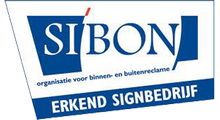Us Vote on Good Friday Agreement
The US Vote on Good Friday Agreement: A Historical Milestone
The Good Friday Agreement, also known as the Belfast Agreement, was a significant moment in Northern Ireland`s history. Signed on April 10, 1998, it ended decades-long sectarian violence and brought peace to the region. The United States played a crucial role in helping to broker and support the agreement, and its vote in favor of the accord was a historic moment in US foreign policy.
The US`s involvement in the Northern Ireland peace process began in the 1980s and continued throughout the 1990s. US officials worked tirelessly to encourage the parties to come to the negotiating table and offered the support of the United States to help broker a deal.
President Bill Clinton was particularly committed to the cause and made several trips to Northern Ireland to push for a resolution. He even appointed Senator George Mitchell as a special envoy to help mediate talks between the parties.
In April 1998, the Good Friday Agreement was finally signed, marking the end of a long and difficult peace process. The United States played a significant role in achieving this milestone, and its vote in favor of the agreement was crucial in securing its success.
US support for the Good Friday Agreement was not without controversy, however. Some US politicians, particularly those with ties to the Irish-American community, were critical of the deal. They felt that it did not do enough to address the concerns of nationalist communities in Northern Ireland and did not provide enough support for those who had suffered during the Troubles.
Despite these criticisms, the Good Friday Agreement has endured, and Northern Ireland has enjoyed relative peace and stability since its signing. The US`s role in achieving this peace should not be underestimated, and its vote in favor of the agreement was a crucial moment in US foreign policy.
As we approach the 23rd anniversary of the Good Friday Agreement, it is worth reflecting on the role that the United States played in bringing peace to Northern Ireland. The agreement was a significant milestone in US foreign policy and demonstrated the power of diplomacy and international cooperation in achieving lasting peace.

